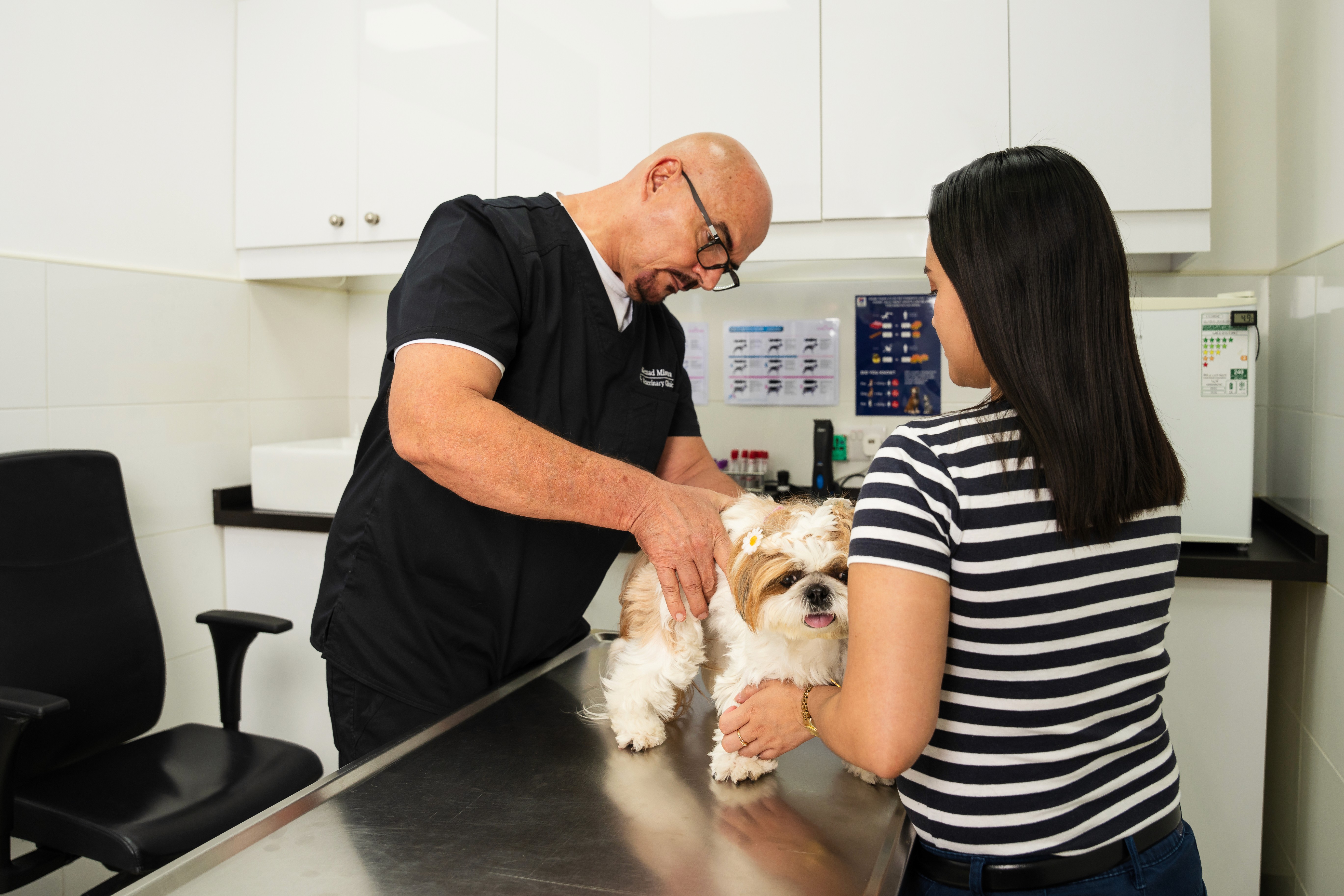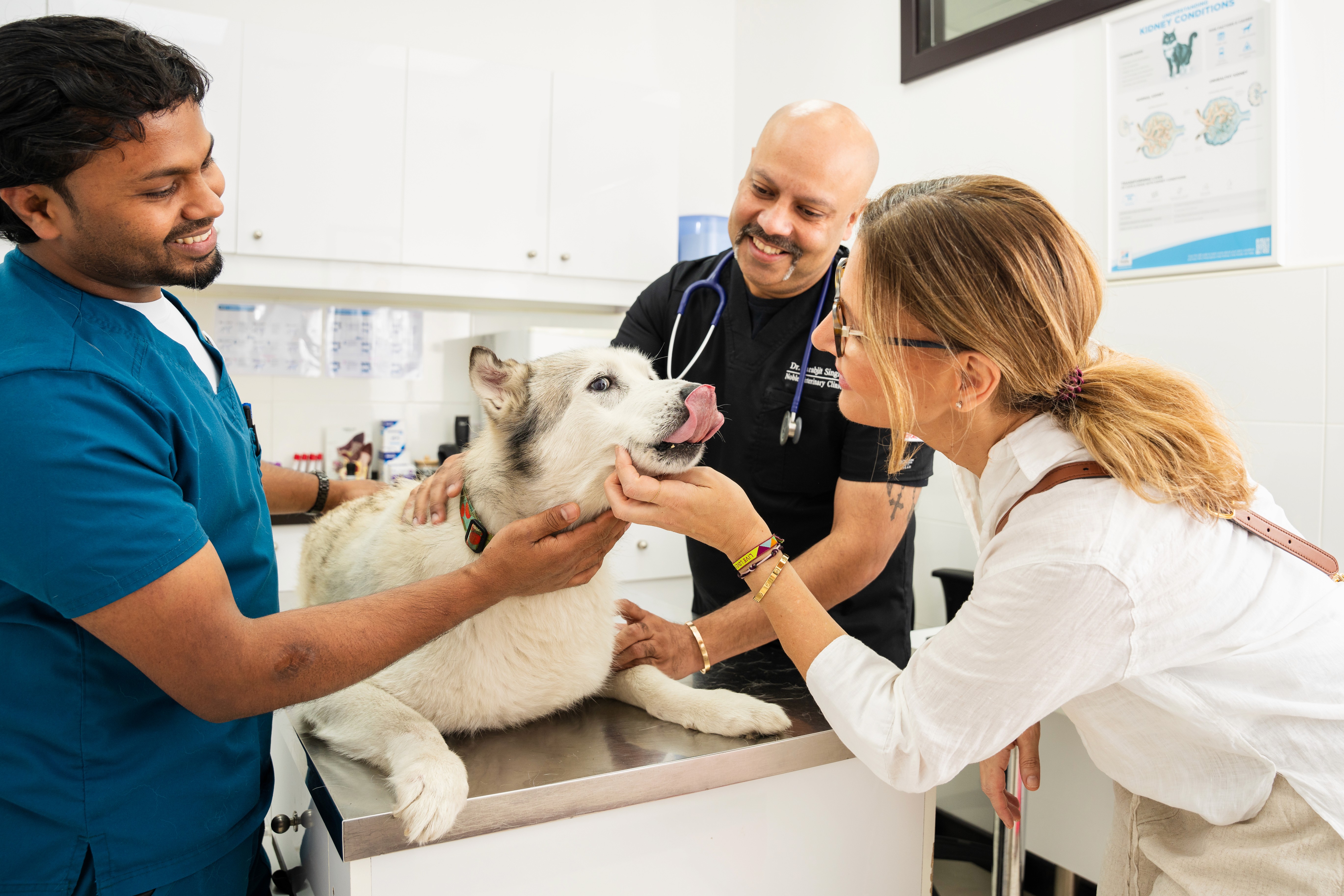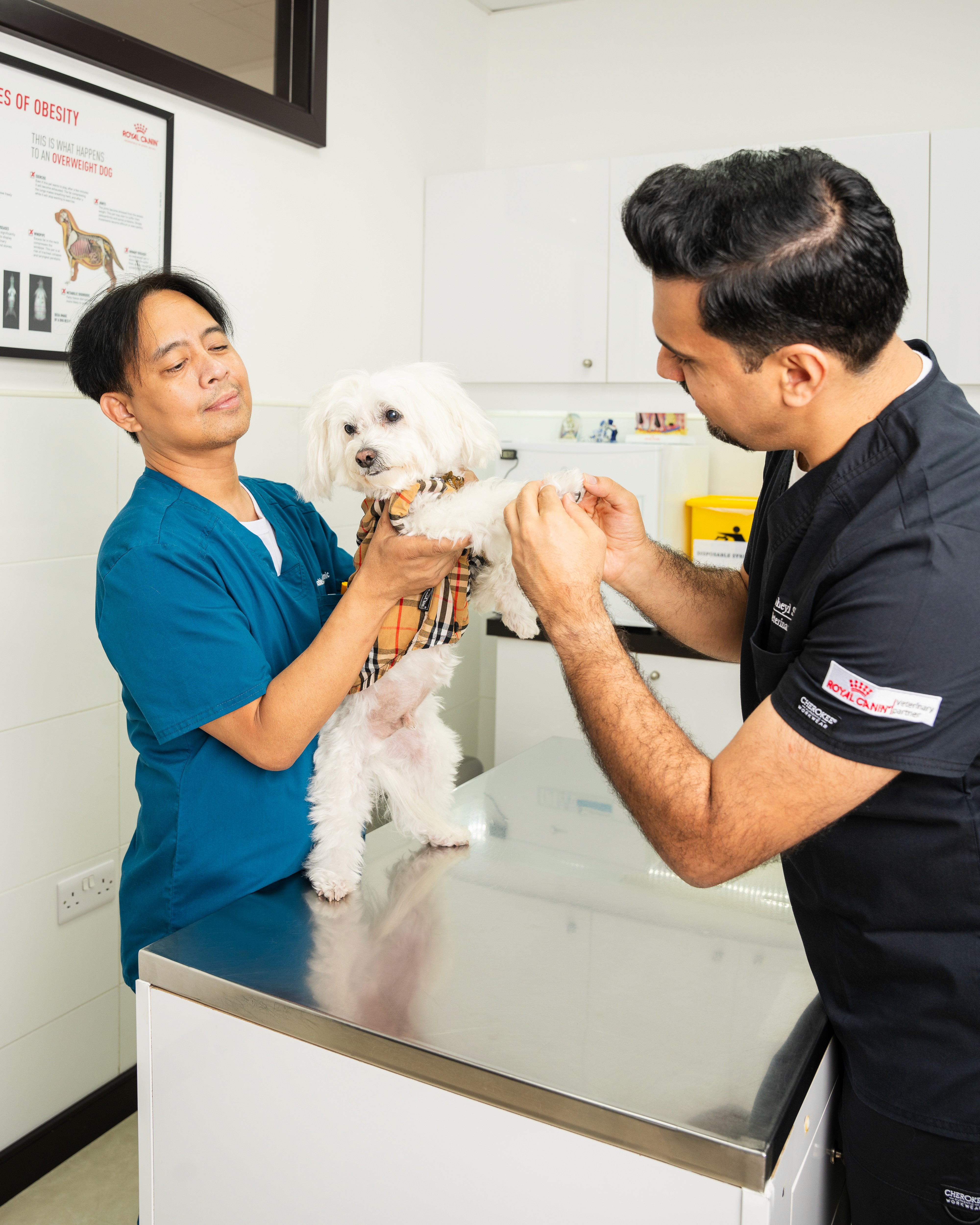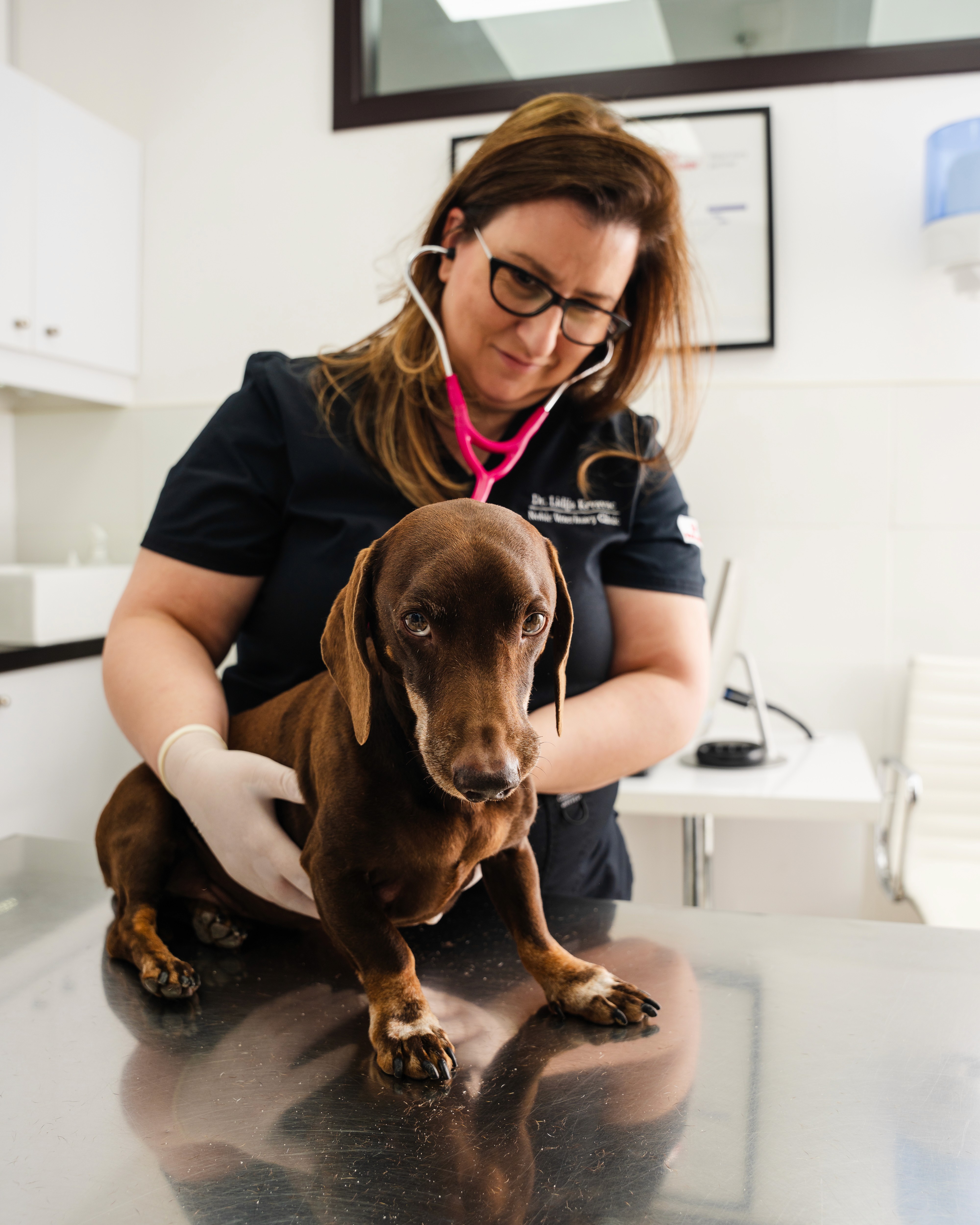5 فبراير 2025
If you have a large or giant breed dog, you've probably heard about hip dysplasia. It’s a common developmental joint problem that affects thousands of dogs each year. This painful condition can impact a dog’s mobility and overall life, preventing them from keeping up with their favorite activities.
In a healthy hip, the ball fits snugly into the socket, allowing smooth movement. However, in a dog with hip dysplasia, the joint is loose or poorly formed, causing the bones to grind against each other. Over time, this wear and tear leads to pain, inflammation, and loss of mobility.
Hip dysplasia is a progressive condition, meaning it gets worse over time if left untreated. It often leads to canine arthritis, a degenerative joint disease that makes movement even more painful for affected dogs. While it can occur in any breed, hip dysplasia is all the more common in large and giant breeds, though some smaller dogs can also develop the condition.
Causes of Hip Dysplasia in Dogs
There is no single cause of hip dysplasia, but several genetic and environmental factors can increase a dog’s risk of developing this condition.
Here are the common factors that cause dysplasia in dogs:
Genetics
Hip dysplasia is primarily an inherited condition, meaning it is passed down from adult dogs to puppies. Dogs with one or both parents affected by hip dysplasia have a much higher chance of developing the condition.
Some breeds are more prone to this condition. This includes:
German Shepherds
Labrador Retrievers
Golden Retrievers
Rottweilers
Saint Bernards
Great Danes
Mastiffs
While large breeds are most commonly affected, smaller dogs like Pugs and French Bulldogs can also develop hip dysplasia due to their unique skeletal structures.
Poor Nutrition and Rapid Growth
Puppies that grow too quickly due to excessive calorie intake or improper nutrition are at a higher risk of developing abnormal bone and joint development. Overfeeding, especially high-fat or high-calorie diets, can accelerate bone growth but not joint development, leading to joint instability.
To help prevent this, puppies should be fed a balanced diet formulated for their size and growth rate. Large-breed puppy foods contain the right balance of calcium, phosphorus, and protein to promote steady, controlled growth.
Excessive or Improper Exercise
While exercise is important for a puppy’s overall health, too much high-impact activity at a young age can put stress on developing joints. Activities like jumping on and off furniture, running on hard surfaces, and excessively climbing stairs can strain your dog’s joints and increase the risk of malformation in breeds predisposed to hip dysplasia.
Obesity
Excessive weight gain also puts added stress on the joints. As your dog gets heavier, the symptoms of hip dysplasia also worsen. Overweight dogs develop arthritis faster and experience more pain and mobility issues compared to dogs at a healthy weight.
Symptoms of Hip Dysplasia in Dogs

Symptoms can range from simple discomfort to some severe mobility issues, depending on your dog’s condition. Some dogs may start showing signs as early as puppyhood, while others may not develop noticeable symptoms until later. Dog owners will notice a lot of changes in their dog’s behavior, movement, and overall activity levels.
Here are the common symptoms of hip dysplasia in dogs:
Decreased activity. Your dog may become less enthusiastic about exercise and prefer resting over playing or going for walks.
Difficulty Moving Up. Hip dysplasia in dogs makes movements that require strong hind-leg support painful and difficult.
Limping or lameness in the hind legs. Your dog may favor one leg over the other or seem stiff after resting.
Bunny hopping gait. Instead of moving their hind legs separately, dogs with hip dysplasia often move both back legs together in a hopping motion.
Wobbly or swaying walk. As the hip joint becomes more unstable, your dog’s hindquarters may appear wobbly or shaky when walking.
Loss of muscle in the hind legs. As hip dysplasia progresses, dogs use their hind legs less, leading to muscle shrinkage.
Enlarged shoulder muscles. To compensate for hind leg weakness, dogs with hip dysplasia shift their weight forward, causing the front leg muscles to develop more than normal.
Pain or sensitivity around the hips. Your dog may flinch, whimper, or avoid being touched near the hip area.
Diagnosing Hip Dysplasia in Dogs
If you suspect that your dog may have hip dysplasia, a vet exam is essential. Since symptoms can resemble other joint or muscle issues, our vets will use a combination of physical exams and diagnostic tests to diagnose the condition and assess its severity.
Here’s how we do it:
Physical Examination
During your visit, the vet will begin by observing your dog’s movements and checking for signs of discomfort. We may watch your dog run, walk, or sit to assess its mobility. We will also check the hip joints for any pain and reduced range of motion. Additionally, we’ll also check your dog’s muscle mass and see if there’s any loss.
X-rays
X-rays are the most reliable way of diagnosing hip dysplasia in dogs. They provide a clear image of the hip joint structure, allowing the vet to check for hip joint looseness and misalignment, signs of joint wear and tear, and joint damage.
Treatment Options for Hip Dysplasia in Dogs
Once hip dysplasia is diagnosed, treatment focuses on managing your dog’s pain, improving its mobility, and slowing the disease’s progression. The right approach depends on the state of your dog’s condition, its age, and overall health. Some dogs can be managed with non-surgical treatments, while others may require surgery for long-term relief.
Non-Surgical Treatments
If your dog’s hip dysplasia is not severe, there are non-surgical methods that can manage symptoms and improve your dog’s quality of life. These options include:
Weight Management. Keeping your dog at a good weight is one of the most effective ways to reduce the stress on their joints. Extra weight and obesity will make things worse, so feeding your dog healthy meals and a low-fat diet will help.
Gentle Exercise and Physical Therapy. Low-impact activities help strengthen muscles and reduce stiffness. The best exercises to help dogs with hip dysplasia are swimming, short walks, and physical therapy.
Pain Relief & Joint Supplements. We may prescribe anti-inflammatory medications to help with pain and stiffness. Joint supplements can also support joint health and slow arthritis progression.
Comfort and Lifestyle Adjustments. Making small changes at home can help your dog feel more comfortable. This includes using orthopedic dog beds, providing ramps for upward movement, and making the home a safer place for your dog.
Surgical Treatments
If hip dysplasia causes constant pain or limits movement, surgery may be the best option. The type of surgery depends on the dog’s age, size, and severity of hip damage.
These are the most common options:
Triple or Double Pelvic Osteotomy. This procedure is mostly recommended for young dogs before arthritis develops. In this type of surgical treatment for hip dysplasia, parts of the pelvis are repositioned to improve joint stability.
Femoral Head Ostectomy. In this surgery, the ball of your dog’s hip joint is removed, and the joint is allowed to heal. This is usually done for smaller dog breeds.
Total Hip Replacement. This procedure is regarded as the most effective for dogs suffering from both hip dysplasia and arthritis. Your dog’s hip joint will be replaced to help improve its mobility.
Preventing Hip Dysplasia in Dogs

While it’s not possible to completely prevent hip dysplasia in dogs, there are steps you can take to drastically reduce the risk.
Large-breed puppies should eat food formulated for their size, with the right balance of calcium and phosphorus to support steady bone development. Keeping dogs at a good weight will be helpful in the long run. When dogs are at a healthier weight, their bodies experience less strain, keeping them stronger.
Additionally, be sure not to overdo your dog’s workout. Too much high-impact exercise at a young age can put a strain on the development of joints. Instead, focus on lighter and more controlled exercises to avoid injuries and strain. Consult a pet trainer and get regular checkups to get started.
A dog’s love is unconditional. Let’s return the favor by giving them the care, comfort, and mobility they deserve.
- Dr. Sarabjit Singh
Conclusion
While hip dysplasia in dogs cannot always be prevented, it can be managed with the right approach. Regular vet visits, a proper diet, exercise, and home adjustments all help keep your dog comfortable and active for years to come.
Be sure to act quickly if you see the signs. Your dogs will thank you for helping them keep their bodies ready for tons of more playtime.
Subscribe to Our
Newsletter
Sign up for weekly pet health tips and insights from our veterinarians.


